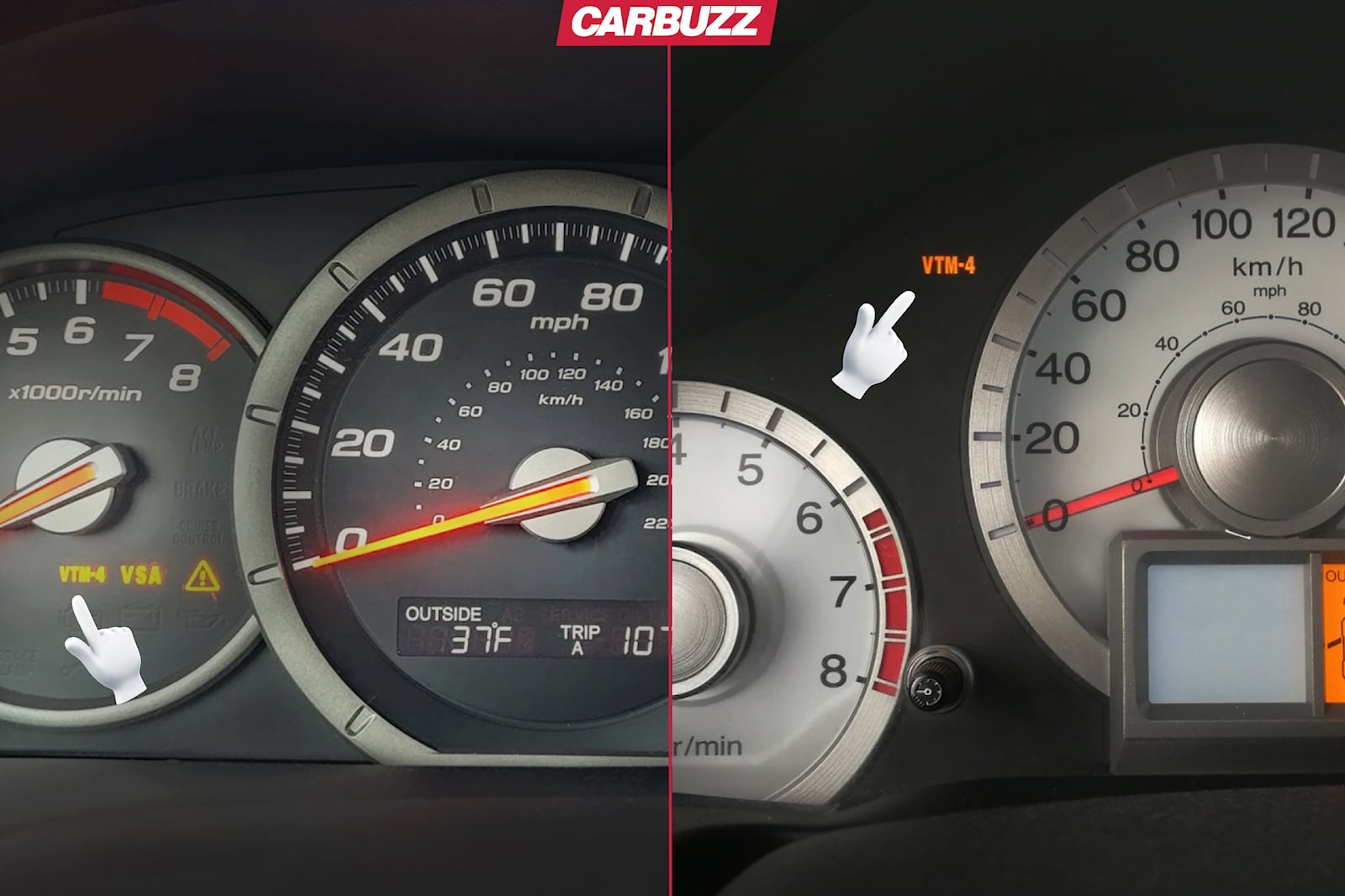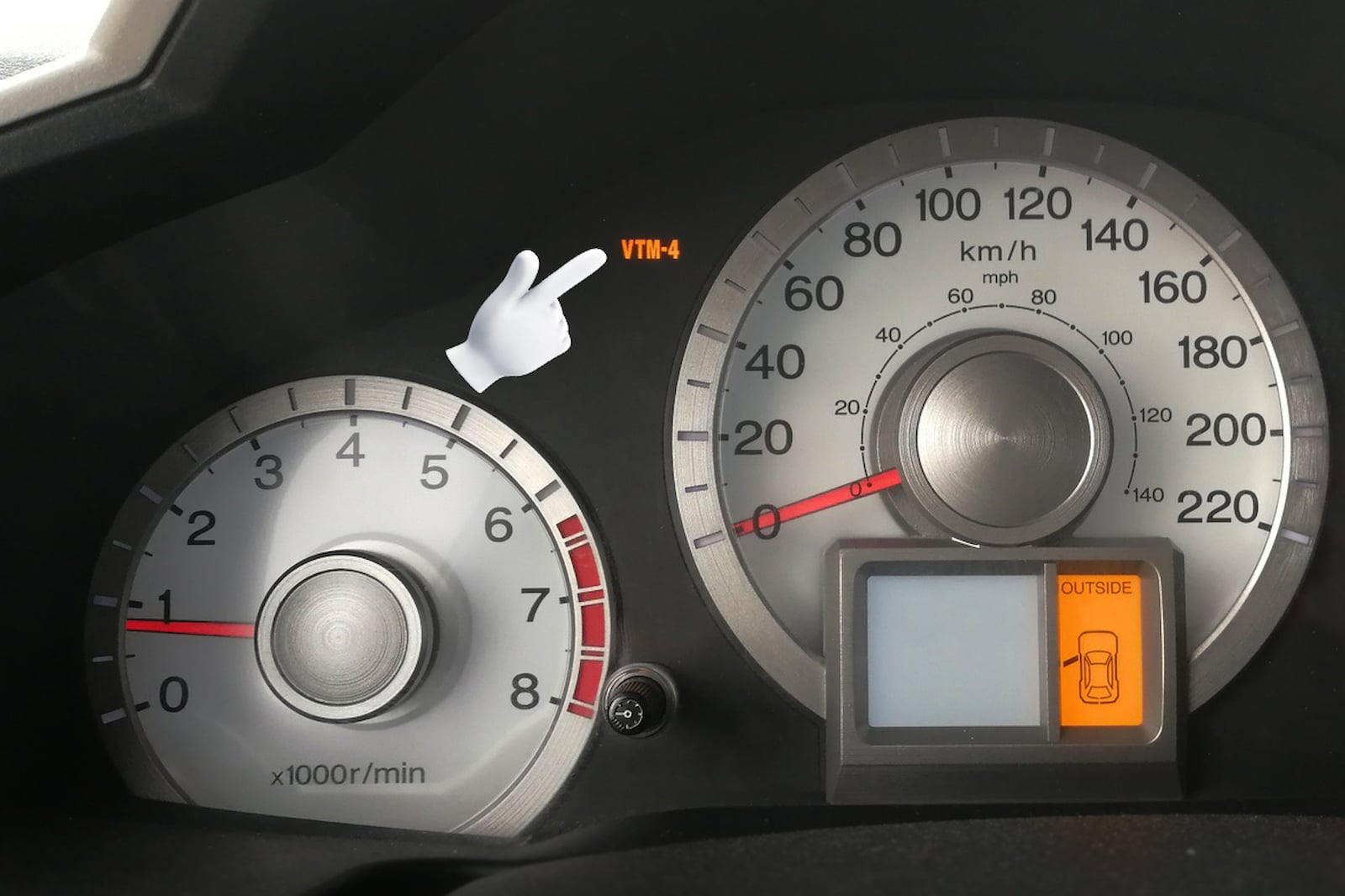The Honda Pilot's all-wheel-drive system is pretty clever, with variable torque distribution between its front and rear axles, as well as between the left- and right rear wheels. It generally works well and ensures strong traction on difficult roads - but some issues have been reported over the years.
The first two generations of AWD-equipped Honda Pilots featured the earlier iteration of this system, named VTM-4, while the latest i-VTM4 system is found in the third-generation Pilot. Their modes of operation are very similar, though, with the newer i-VTM4 essentially just adding more intelligence to the rear-axle torque distribution algorithms for improved agility and better stability in extreme driving conditions. But what if something goes wrong?
So, what does the VTM-4 light on a Honda Pilot mean, and does it indicates a dire prognosis? First, let's look at what VTM-4 is. VTM-4 is the acronym for Variable Torque Management 4-wheel drive system, denoting the electronically-controlled 4-Wheel-Drive system Honda uses in their higher-end SUVs. Don't confuse this with Honda's "Real Time AWD" as used in earlier CR-V and HR-V models because that system lacks the VTM-4's clever rear differential and does not have the same torque-distribution abilities as the full-fat VTM-4 or i-VTM4 systems. So, if the VTM-4 light on your Honda Pilot comes on, it indicates a problem in this system.
However, it's important to note that there is a clear distinction between the gauge-display-mounted VTM-4 (or i-VTM4) warning light, and the confirmation light inside the dashboard-mounted VTM-4 switch, to the left of the audio system. The VTM-4 warning light in the Honda Pilot's instrument cluster should only illuminate when starting up the engine, following which it should extinguish within a second or so. Thereafter, it's supposed to remain off, even if the clever rear differential is called to action. If the VTM-4 cluster warning light switches on while driving, it indicates something amiss with the rear differential operation, which can be due to a surprisingly wide array of possible causes.
The confirmation light in the switch indicates that "VTM-4 Lock Mode" has successfully been engaged. However, the confirmation light should only be illuminated when you have purposely engaged Lock mode, and the button should be pressed again to disengage Lock as soon as it is no longer necessary or when returning to hard surfaces. Doing so will turn off the confirmation light, and all will be well.
Reasons why the VTM-4 light on a Honda Pilot could illuminate vary; from easily-remedied issues with the wiring harness or sensors to being part of a much larger set of problems, including:
First-generation (2003-2008) Honda Pilots will most likely illuminate the VTM-4 warning light due to insufficient differential fluid or a sensor error, with 2004- and 2005 model year examples reportedly being most prone to these ailments.
Second- and third-generation Pilots (2009-2015 and 2016-2022 model years, respectively) share these possible causes but add the possibility that there may be engine- or emission-control problems, in which case the AWD system will automatically disengage and switch the warning light on. This appears to be most prevalent on examples built in 2011, 2012, and 2013 - roughly in line with the model years of those Honda Pilots, which are most prone to emission-control issues as well.
Click here to read more about Honda Pilot 2nd Generation.
Whereas a warning light that stays on is less serious, if the light is flashing, you should stop driving as soon as possible. According to the owner's manual, a flashing VTM-4 warning light on a Honda Pilot means that you should immediately pull over, slot the transmission into Park, and let the engine idle until the VTM-4 light stops flashing.
If it continues flashing even after an extended idling period, shut down the engine and call a towing service to take your Pilot to a reputable workshop on a flatbed truck. In this case, a flashing Honda Pilot VTM-4 light indicates a serious problem in the rear differential, and driving on is likely to cause further damage.
A flashing Honda Pilot VTM-4 light indicates a problem where Honda advises urgent attention from a technician, but if a VTM-4 warning light stays on, it simply means that the AWD system has been deactivated due to a problem. In this instance, the control system has isolated the fault by disengaging the torque take-off from the front transaxle and opening the VTM-4's clutches, turning your AWD Honda Pilot into an FWD-only car.
If the light is on all the time, you can continue driving, but with due consideration for the fact that the AWD system is not available and that it will need attention very soon. A proper diagnostic effort and effective repairs are, unfortunately, the only way to effectively deal with an illuminated VTM-4 light on a Honda Pilot.
The cure for an illuminated VTM-4 warning light varies depending on the problem that triggered the light in the first place. Two of the possible remedies are simple DIY jobs, which are well within the abilities of a mildly-capable home mechanic. Other problems are more demanding and will need professional hands to resolve. Here is a checklist to follow if you're wondering how to turn off a Honda Pilot VTM-4 light:
If the problem in a Honda Pilot's VTM-4 is related to a sensor issue in the rear differential assembly, the repair will be surprisingly affordable because an OEM temperature sensor can be had for less than $70, and it's an easy DIY replacement exercise. VTM-4 fluid is also quite well-priced, costing less than $30 for a gallon, and replacing it is also a straightforward DIY task.
Repairs for the oil consumption/emission control issue range from complete engine replacement in extreme cases to simply reprogramming the engine control unit and fitting a new set of spark plugs, but this all depends on the severity of the oil consumption problem. This issue needs professional attention, and may even be covered by a class-action lawsuit or Honda's eight-year engine warranty extension. Check with your dealership whether your Pilot is covered for this well-known issue, but remember that this problem did not lead to a recall, so only cars with active warranties will qualify for Honda's extended cover.
Lastly, if the VTM-4 or i-VTM4 unit itself needs to be replaced, expect to pay upwards of $3,700 for the assembly, excluding oil or labor to fit it. This alone is enough reason to pull over when the VTM-4 warning light starts flashing! As far as the VCM issue is concerned, check with your Honda dealership if your Pilot is included in the warranty extension for this matter, because, apart from sensor- or wiring failures, emission control malfunctions are the main reason why a Honda Pilot's VTM-4 warning will light up.
 CarBuzz
CarBuzz
 CarBuzz
CarBuzz
 CarBuzz
CarBuzz